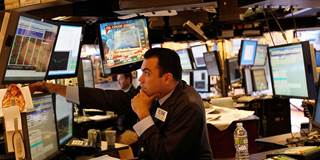Thanks to trade tariffs on Chinese imports, China-centric global value chains will no longer offset pressure on prices stemming from a tight US labor market. That could mean that the Federal Reserve must significantly exceed the so-called comfort zone of interest-rate normalization that financial markets are currently discounting.
NEW HAVEN – It was inevitable. Another upturn in the US inflation cycle is at hand. Since the Great Disinflation of the early 1980s, when the annual increase in the Consumer Price Index (CPI) plunged from 14.7% in March 1980 to 2.4% in July 1983, inflation has generally remained in a relatively narrow 1-5% range for a quarter-century. When the economy softened, inflation slid to the lower end of that range, and when it strengthened in the late 1980s, late 1990s, and in the pre-crisis 2000s, it moved to the upper end. Such is the case today.

NEW HAVEN – It was inevitable. Another upturn in the US inflation cycle is at hand. Since the Great Disinflation of the early 1980s, when the annual increase in the Consumer Price Index (CPI) plunged from 14.7% in March 1980 to 2.4% in July 1983, inflation has generally remained in a relatively narrow 1-5% range for a quarter-century. When the economy softened, inflation slid to the lower end of that range, and when it strengthened in the late 1980s, late 1990s, and in the pre-crisis 2000s, it moved to the upper end. Such is the case today.